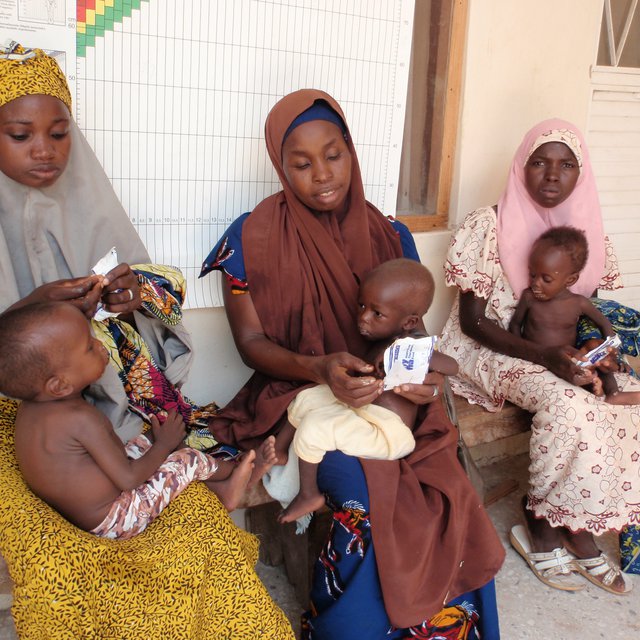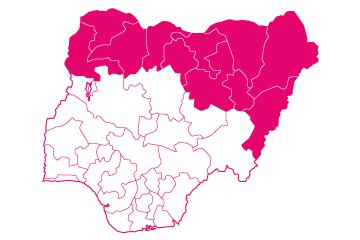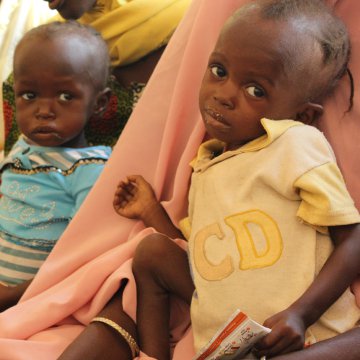Treating malnourished children in Nigeria
Saving children's lives with care and fortified peanut paste.
Severe acute malnutrition
Invisible yet deadly, 17.6 million children are severely and acutely malnourished each year. Most live in Asia and Africa and are not victims of famine and conflict.
Severe acute malnutrition, or severe wasting, occurs when a child’s weight drops to such a low level they are at risk of dying.
Nigeria’s rates of severe wasting are among the highest in the world at 1.9 million children each year. Up to 10% will die without treatment.

Our approach
As recently as ten years ago, treatment for severe wasting had to be carried out in hospital. An alternative community-based approach to care and treatment has proved effective in reaching many more children than a limited number of hospital beds allow.
In Nigeria, the Community Management of Acute Malnutrition (CMAM) programme welcomes mothers and children to local health clinics. Malnourished children are able to recover quickly by eating fortified peanut-based ready-to-use therapeutic food. Mothers and children also receive basic health care, treatment for common childhood diseases, and nutrition and feeding advice which can followed at home.

Local services
Working with Nigeria’s Federal and State Ministries of Health and UNICEF, the community programme delivers life-saving care and treatment to children with severe acute malnutrition under the age of five in 11 states in Northern Nigeria.
All children diagnosed with severe wasting attend regular clinics and receive advice on home care and treatment, including packets of ready-to-use therapeutic food.
Outcomes
-

11 states
-

592 health clinics
-

251,314 children treated
-

81% cured
What we're learning

Local services
Providing treatment in the community enables health workers to reach large numbers of children. In the year to June 2014, the programme reached 251,314 children of which 81% were successfully cured of severe acute malnutrition.
This exceeds the minimum international standard of 75% cure rate for CMAM programmes in a non-emergency setting. An estimated 24,100 lives were saved by the programme.

Building trust
Through the results of the programme, mothers are able to see visible improvements in the health and wellbeing of their children. This helps to build the trust of the community in health care available at the clinics, which in turn, creates demand for other important services such as antenatal care.
There is an urgent need for treatment of severe acute malnutrition to become part of essential health services delivered by all clinics so that every child who needs treatment receives it.

Data matters
Accurate measurement of coverage is vital to understand what proportion of severely wasted children are being reached and what the barriers are. In addition, routine monitoring data generated from the programme highlights many important elements for effective child health, such as which clinics are performing well and which are not. Clinics which are not performing well – reporting low admissions and poor recovery rates – receive follow up support from Nigerian government officials and UNICEF to help them improve.
On average, 37% of children in need of treatment were being received at the clinics, although coverage varies widely across states.